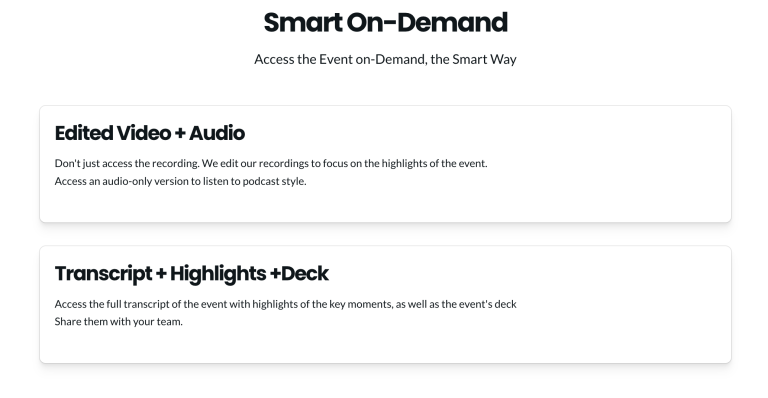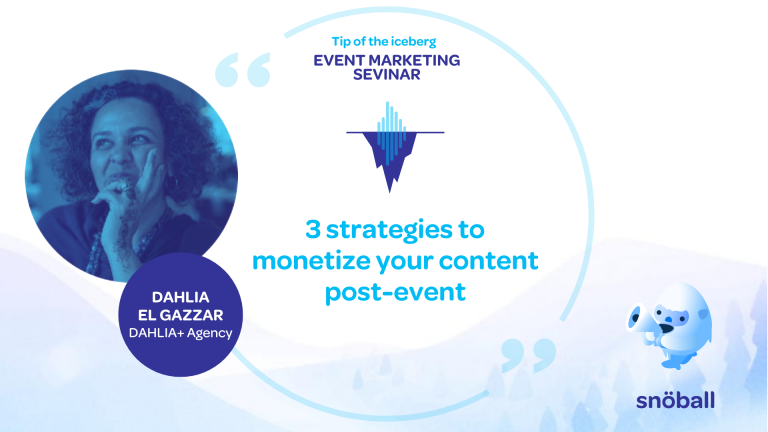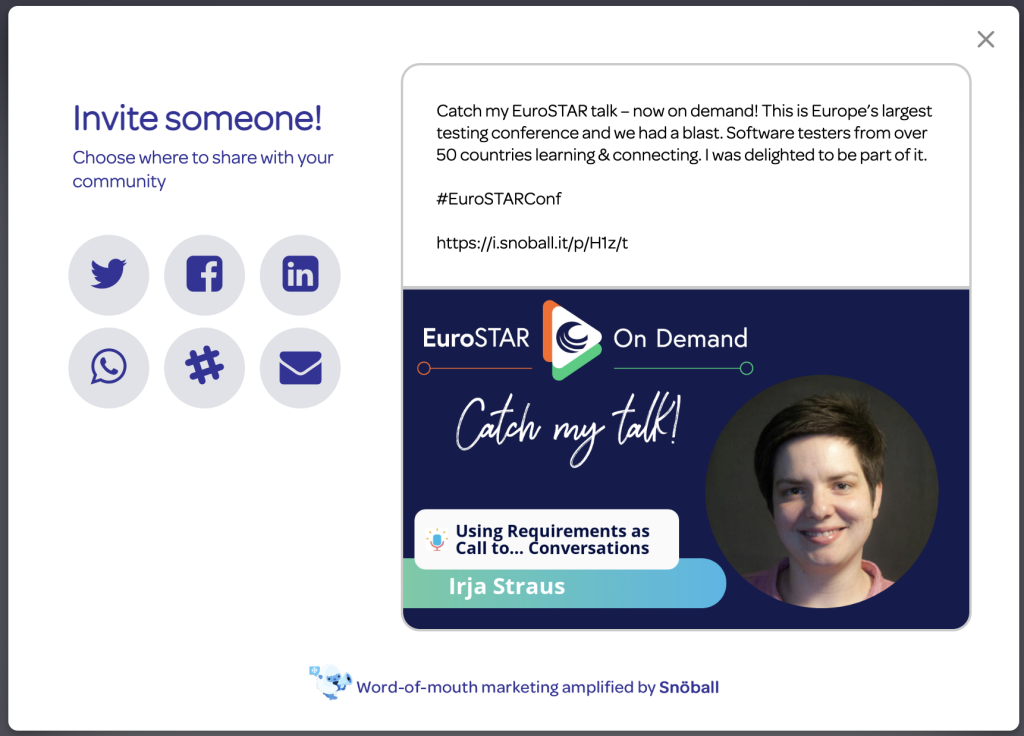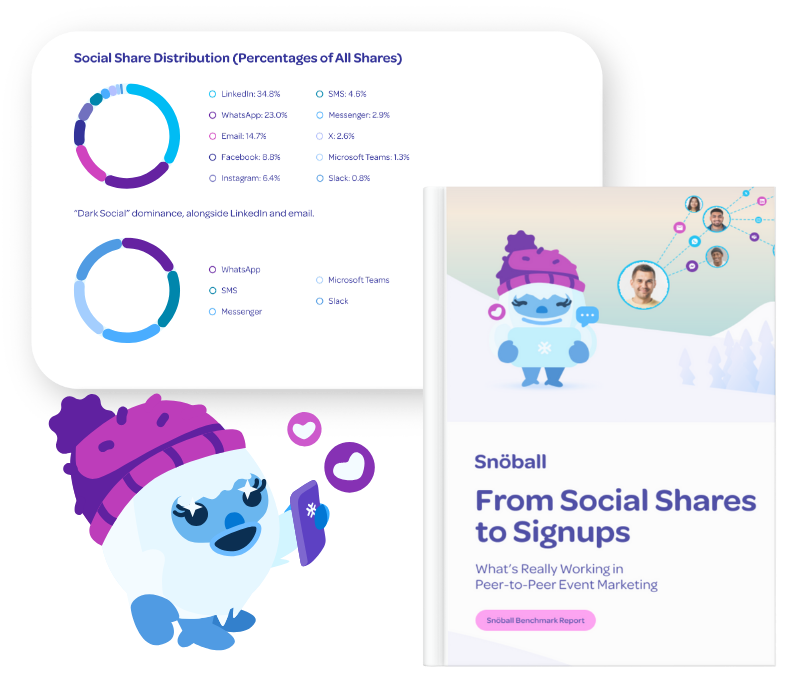As an event marketer, you know that creating valuable and engaging content for your conference attendees is crucial to the success of your event. However, what happens to all that great content after the conference is over? If you’re not repurposing it, you’re missing out on a valuable opportunity to reach a wider audience, extend the life of your event and leverage past event content to promote upcoming events.
Repurposing your event content enables you to reach new people, reinforce the value of your event, and make the most of your investment in content creation. Here are ten tips on how to repurpose your conference content effectively:
1. Start a content plan with the end in mind
Before the event, create a plan for how you will repurpose the content. Consider what formats will work best, such as blog posts, infographics, videos, or podcasts, and which channels you will use to distribute the content.
As with any content marketing effort, it’s important to start with a plan for repurposing conference content. This should include the goals you hope to achieve, the formats you will use, and the channels you will use to distribute the content. For example, you might plan to create a blog post series based on the event sessions, distribute the content via social media and email, and track engagement metrics like clicks and shares.
Real-life example: HubSpot’s Inbound conference is a well-known example of a conference with a strong content plan. In addition to live streaming sessions and making recordings available to attendees, the company creates a wealth of blog posts, videos, podcasts, and social media content based on the conference content. They also release a report summarizing the event’s key takeaways and trends, which is a great example of repurposing conference content into a different format.
2. Record sessions
Record your keynote speeches, panel discussions, and breakout sessions so you can repurpose them as videos or podcasts. Make sure to get permission from presenters and attendees before sharing the recordings publicly.
Recording sessions at your event is an effective way to create video or audio content that can be repurposed later. This can be done using a smartphone, a digital recorder, or a professional video crew depending on your budget and goals.
Real-life example: TEDx events are known for the high-quality video recordings of their talks. The TED organization repurposes this content by sharing it on their website and YouTube channel, as well as through partnerships with other media outlets. They also create playlists and collections of talks around specific themes or topics, allowing viewers to discover and engage with the content in different ways.
3. Transcribe sessions
Transcribe the recorded sessions to create written content. You can use this to create blog posts, social media updates, or e-books.
Transcribing event sessions can help you create written content that can be used in blog posts, e-books, or social media updates.
Online tools like Milk Video, Descript and Clipr allow you to easily edit, highlight, and transcribe all types of video content. You can effectively turn your webinar into a social media post or edit a compilation of highlights from a Zoom interview.
Real-life example: The Content Marketing World conference creates a wealth of written content based on the sessions, including blog posts, e-books, and social media updates. The conference also offers a virtual ticket that includes access to the session recordings and transcripts, which allows attendees to revisit the content and share it with others.
4. Create Session Summary infographics
Use data and statistics from your event to create visually appealing infographics. These can be shared on social media, your website, or in emails to your audience.
Infographics are a visually appealing way to repurpose data and statistics from your event. They can be shared on social media, your website, or in email newsletters to help promote the event and engage with your audience.
Real-life example: The South by Southwest (SXSW) conference creates infographics based on attendee data to help promote the event and showcase its impact. For example, the 2019 SXSW Conference & Festivals infographic highlights the number of attendees, the economic impact on the host city of Austin, and the top trending topics on social media.
5. Package and repurpose slide decks
Turn your speaker presentations into stand-alone slide decks that can be shared with your attendees. You can also use slides as the basis for creating blog posts, social media updates, or e-books.
Real-life example: The MozCon conference shares slide decks in blog posts. These slide decks are a great resource for attendees and others who want to revisit the content, and they also help promote the conference to a wider audience.

6. Host a post-conference webinar
Invite speakers to participate in a post-conference webinar where they can expand on their presentations, take questions from attendees, and share additional insights.
Hosting a webinar after your event can be a great way to engage with attendees and share additional insights based on the content presented at the event.
Real-life example: The Social Media Marketing World conference offers a virtual ticket that includes access to session recordings, transcripts, and a post-conference webinar series. These webinars feature conference speakers discussing their sessions in more detail and answering questions from attendees.

7. Interview speakers
Conducting interviews with conference speakers can provide valuable content for blog posts, social media updates, and even podcast episodes. You can ask speakers to expand on their presentation topics, share additional insights, or answer questions from attendees.
Real-life example:The HubSpot Inbound conference includes a podcast series featuring interviews with conference speakers. These interviews provide additional context and insights for attendees and help promote the conference to a wider audience.
8. Share on social media
Use social media to share conference highlights, including photos, quotes, and key takeaways. Make sure to tag speakers, sponsors, and attendees in your posts to encourage engagement.
Social media is a powerful tool for promoting your event and repurposing its content. You can create social media updates based on session highlights, keynote quotes, or attendee feedback.
Real-life example: The Content Marketing World conference creates a lot of social media content, including live-tweeting sessions, posting photos and videos on Instagram, and creating Twitter polls to engage attendees and other followers.
9. Develop a content hub
A content hub is a dedicated section of your website that houses all of your event content. This can include blog posts, videos, infographics, and other assets that provide additional context and insights for attendees and other stakeholders.
Real-life example: The Salesforce Dreamforce conference has a dedicated content hub that includes a wealth of resources, including session recordings, keynote videos, blog posts, and e-books. This content hub is a great resource for attendees and others who want to learn more about the event and its topics.
10. Use past event content to promote future events
Finally, you can use your repurposed conference content to promote future events. By showcasing the value of your event content, you can help build buzz, excitement, and FOMO for future events, and encourage attendees to return.
Real-life example: Eurostar leveraged their past content and the influential power of their speakers to promote the on-demand library and generate more revenue. In addition to driving demand and revenue, they also cross promote their upcoming event by showcasing their past content.
Bottom-Line
In conclusion, repurposing your event content can provide a wealth of benefits for event marketers, including extending the reach of your event content, providing valuable resources for attendees, and promoting future events. By following these 10 tips and leveraging a variety of content formats and channels, you can maximize the value of your event content and create a lasting impact for your event.
Find out more about how Snöball can help you repurpose your event content to drive audience growth.






